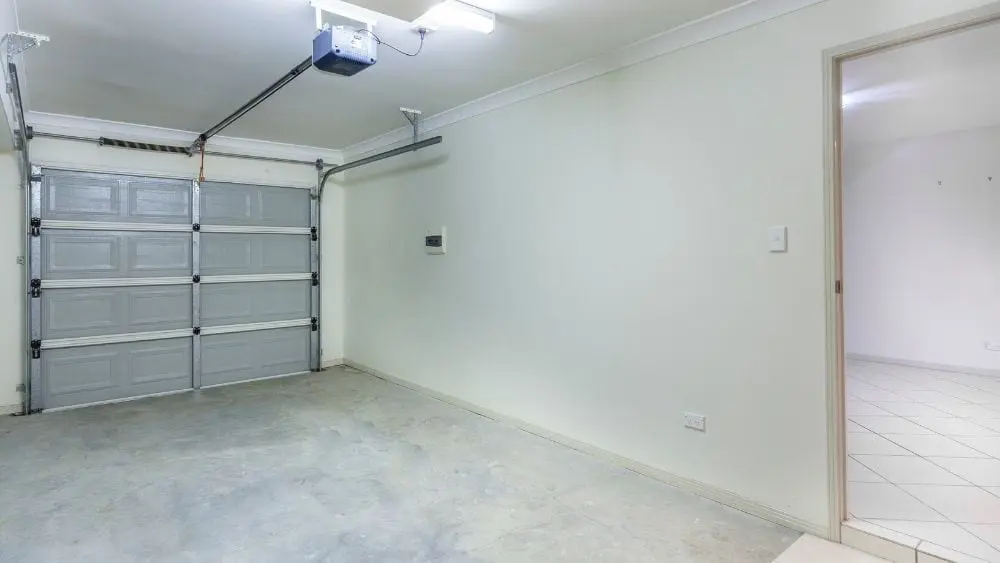
Don’t forget about this part of your new home now so you can save energy, money later
While a new construction or custom built home should already include insulation standards that meet all local and federal building codes, there are instances when a new homeowner can enjoy even greater benefits by adding additional or enhanced insulation into the mix. This is especially true of one of the least insulated sections of most homes – the garage.
Taking the time to properly plan the insulation of your new garage prior to construction can lead to tangible savings related to utility costs and create a more functional, multi-purpose garage space for you and your family.
Why Worry About Insulating a Garage?
Originally intended for automobile storage, garages are now used for a variety of purposes, many of which have nothing to do with motorized vehicles. Properly designed, a garage can be a great place to set up a workshop or crafting area, locate a washer and dryer laundry center, and safely store items not always needed in the main house.
Many of these additional uses may be negatively impacted by varying seasonal temperatures as garages are seldom, if ever, included in a home’s main heating and cooling system. Additional or enhanced garage insulation is a great way to help ensure your new garage will be capable of providing a proper environment suitable for whatever use.
Garage Insulation Basics
Depending on the new homebuilder you select, the walls of your future garage may be finished out with drywall or sheetrock. While the inclusion of drywall or sheetrock is not mandatory for insulation, it does provide additional insulating properties while offering a more refined visual look by covering the insulation materials attached to the walls and ceiling of the garage.
For garages with attics or bonus rooms located above, the ceiling area will usually be finished out with drywall or sheetrock to meet standardized building codes.
Even if your new homebuilder has indicated that drywall and insulation is included, be sure to inquire about the type and extent of insulation used to ensure it will be sufficient to meet your future needs. As with most new home enhancements, it’s always faster, easier and more cost effective to include them during the initial construction of the home versus attempting to retrofit them later.
The Details: Insulation Materials and R-Value
Fiberglass
The primary type of insulation material used by new homebuilders today is fiberglass based. Sold in rolls (also referred to as “batts”) of varying thickness, fiberglass is an easy material to cut, mold and attach into wall cavities between wall studs and ceiling joists. If your new homebuilder uses fiberglass for insulation in the walls and ceiling of your garage, ask what “R-Value” the insulation will include. R-Value is a rating system designed to gauge a material’s resistance to conductive heat flow and is rated based on its thermal resistance.
Based on a numeric rating system, the higher the R-Value number, the greater a materials heat flow resistance or insulating properties will be. A simple way to quickly increase your garage insulation is to have your builder utilize a thicker sheet of fiberglass insulation with a higher R-Value rating. Homes located in geographical areas that experience extreme cold or hot temperatures may need higher R-Value insulation values compared to homes in more moderate climates. Standard fiberglass insulation rolls typically offer R-value ranges of 2.2 to 3.2.
Cellulose
Cellulose insulation is another popular option with builders today. Composed primarily from recycled newspapers and treated with a fire retardant, cellulose is blown into wall and ceiling cavities, not rolled out in sheets like fiberglass. Cellulose insulation usually includes a higher R-Value rating of 3.6 compared to rolled fiberglass and is superior at preventing airflow through the material.
Spray foam
While not as cost effective as fiberglass or cellulose, spray foam insulation is a popular choice for homeowner’s seeking the highest R-Value of the three. For example, the R-value rating of spray foam is approximately 6.0 per inch compared to the fiberglass R-value of 2.2 to 3.2 per inch. When properly applied, spray foam is capable of providing better insulation for less material compared to most other insulation options, which can help negate some of the increased expenses associated with the material. Spray foam is a popular choice among higher-end homebuilders and those seeking maximum garage insulation.
Utility cost savings from improved garage insulation
For homes with an attached garage, additional insulation can lead to noticeable utility cost savings especially in locations with more extreme climates.
An attached garage will share at least one common wall with the main home. A poorly insulated shared wall will more easily allow the transfer of hot and cold temperatures between the main home and the garage, which will require the home’s main cooling/heating system to work harder than necessary to maintain a set temperature range inside the home.
By creating a better-insulated barrier within the shared common wall, a homeowner can help prevent unnecessary heat transference between the garage and the main home to lower utility costs year round. Even if you won’t use your garage for anything other than car storage, improving the insulation within the shared walls of your garage and home can lead to real future cost savings.
For homeowners heating or cooling a detached garage with a space heater or separate AC system, additional insulation will require them to run less frequently by keeping more of the heated/cooled air within the garage resulting in lower utility costs.
A garage with enhanced insulation will do a much better job keeping temps stable within the space while helping to prevent exterior temps from transferring through but is not capable of actually heating or cooling a space on its own. You will need to include some type of HVAC system in your garage plans if you wish to regulate temperatures throughout the year. This is especially true if you plan to locate a laundry center within the garage in an area that may experience sub-freezing temperatures.
Don’t forget the garage door!
Garage doors present one of the greatest challenges to homeowners when they embark on the journey of enhanced garage insulation. A typical garage door is comprised of 24-gauge steel and backed with rigid foam insulation. It is best to replace a standard garage door with a higher R-value rated model when designing an energy efficient garage.
Garage doors with higher R-value’s will include thicker insulation sandwiched between the exterior steel door and a backing of either steel or high grade plastic on the inside of the door. Several moderately priced “DIY” garage door insulation kits are available at most major home improvement retail stores for those who prefer to save money by completing the work on their own. With the door(s) serving as an exterior wall of your garage, this is another area of your insulation project you’ll want to spend time on with your builder to ensure maximum insulation efficiency.

Brian Ford spent more than a decade in the specialty appliance retail industry and now devotes his time to freelance print and video content creation. Brian is also a contract consultant within the call center industry. In his free time, he operates a YouTube channel specializing in instructional guitar videos that he composes and produces at his home studio in Austin, Texas.
 5 Things That Come with a New Home That Are Not the House
5 Things That Come with a New Home That Are Not the House